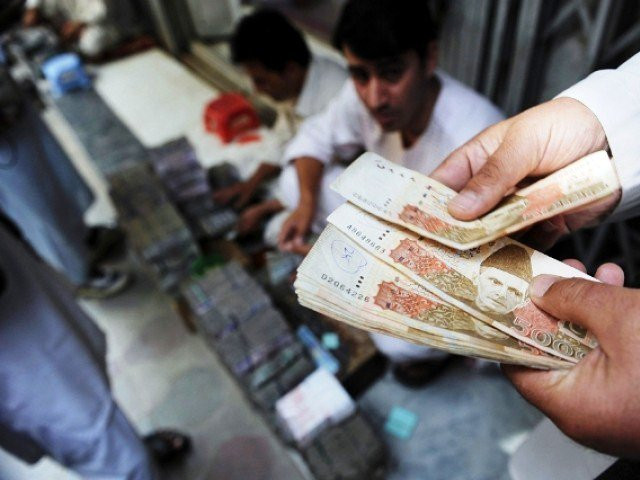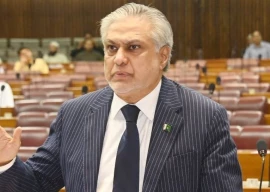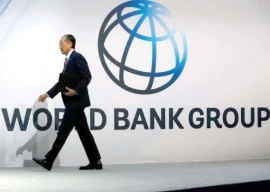
The National Economic Council (NEC) on Tuesday approved the Pakistan Economic Outlook 2035 concept for increasing the size of national economy to $1 trillion and reducing poverty to 15% - the ambitious goals that could not be achieved without political stability.
The Planning Commission’s documents painted a bleak picture of Pakistan in 2035, if the new goals were not achieved and the political leadership failed to ensure stability in the country.
Headed by Prime Minister Shehbaz Sharif, the NEC, a constitutional body that approves macroeconomic plans, endorsed the concept of Pakistan Economic Outlook 2035.
It also approved the Annual Plan 2023-24, setting gross domestic product (GDP) growth target at 3.5% for the next fiscal year and inflation target at 21%.
“In the case of business as usual, the economic growth will be 3.5% even after 12 years,” Ahsan Iqbal, Federal Minister for Planning, said after the NEC meeting.
The minister said that in the no-reforms scenario, the size of Pakistan’s economy would be $573 billion in 2035 and “this can be almost doubled to $1 trillion, if we introduce reforms today”.
In the current fiscal year, the economy grew a meagre 0.29%, which too was controversial, and the size of the economy was just $341.6 billion.
Political instability, rapid expansion of population, under-harnessed youth bulge, deficient human resources base and lack of continuity of policies remain the main challenges.
The nation needs to be made aware of the implications of “business as usual” and “aspirational” paths and choices to be made in order to achieve an aspirational path, the minister said.
In case Pakistan fails to bring reforms, in 2035 its population will be 340 million and it will be the fastest growing nation in the world, going to add a population of the size of South Korea in the next 10 years, according to the NEC documents.
Without reforms, by the year 2035, the economy is projected to grow by 3.5% on average with the agriculture, industry and services sectors following the traditional growth patterns.
With a low GDP growth and increasing population, the unemployment rate is expected to rise in the range of 9% by 2035.
Under the envisioned transformational scenario, the economic growth is expected to accelerate with an annual average of around 6% up to 2035 and growth acceleration in all sectors.
For the initial years, the government has not shown any major increase in the size of the economy, which is projected to start ballooning from 2027.
With the current pace, Pakistan’s exports are shown at a mere $51 billion in 2035, which the Planning Commission said could be increased to $127 billion by reforming various sectors and making available adequate resources.
In the no-reforms scenario, imports are shown at $109 billion, which in transformational cases can increase to $200 billion due to import of hi-tech goods for industrialisation.
“If we could not increase exports to $100 billion in the next eight years, Pakistan will never be in a takeoff position and remain stuck in the debt trap,” said Ahsan Iqbal.
Without a significant increase in exports, the external sector may remain volatile, leading to negative consequences for debt, deficit and currency value.
According to the concept paper, without structural transformation, Pakistan will have 40% of its population below the poverty line. An additional 8 million children will exert demand for additional 250,000 primary schools at the current rate of enrolment.
The unemployment rate can be reduced to around 5% and poverty rate to 15% by changing the path of the economy.
The current population growth also warrants augmenting the capacity of the civil apparatus to ensure better governance.

design: mohsin alam
Overall, 35.3% of cases in the superior and district judiciary were pending. The average case per judge is 1,473. To keep the existing ratio of pendency, at least 1,065 more judges will be required in 2035.
In 2018, one police station was available for 61,574 people. In 2035, 1,218 new police stations will be required at the existing ratio.
“Pakistan has a choice to either keep business-as-usual approach or adopt a transformative path,” said the planning minister.
The business-as-usual approach to economic management and governance was unlikely to result in realisation of the true potential of the nation, he added.
The government claimed that the country was well on its way to achieve the goal of being among the top 25 economies of the world by 2025. Unfortunately, after 2018 the new government abandoned the Vision 2025 and put the country on a day-to-day management without any roadmap, it added.
To achieve sustained high GDP growth over a significant period, lasting at least two decades, Pakistan must allocate more resources for developing human capital and adopting productivity-enhancing measures. To this end, the investment-to-GDP ratio needs to increase from 13.6% in 2023 to approximately 22% in 2035, according to the concept paper.
Published in The Express Tribune, June 7th, 2023.
Like Business on Facebook, follow @TribuneBiz on Twitter to stay informed and join in the conversation.


1731914690-0/trump-(26)1731914690-0-165x106.webp)















COMMENTS (1)
Comments are moderated and generally will be posted if they are on-topic and not abusive.
For more information, please see our Comments FAQ